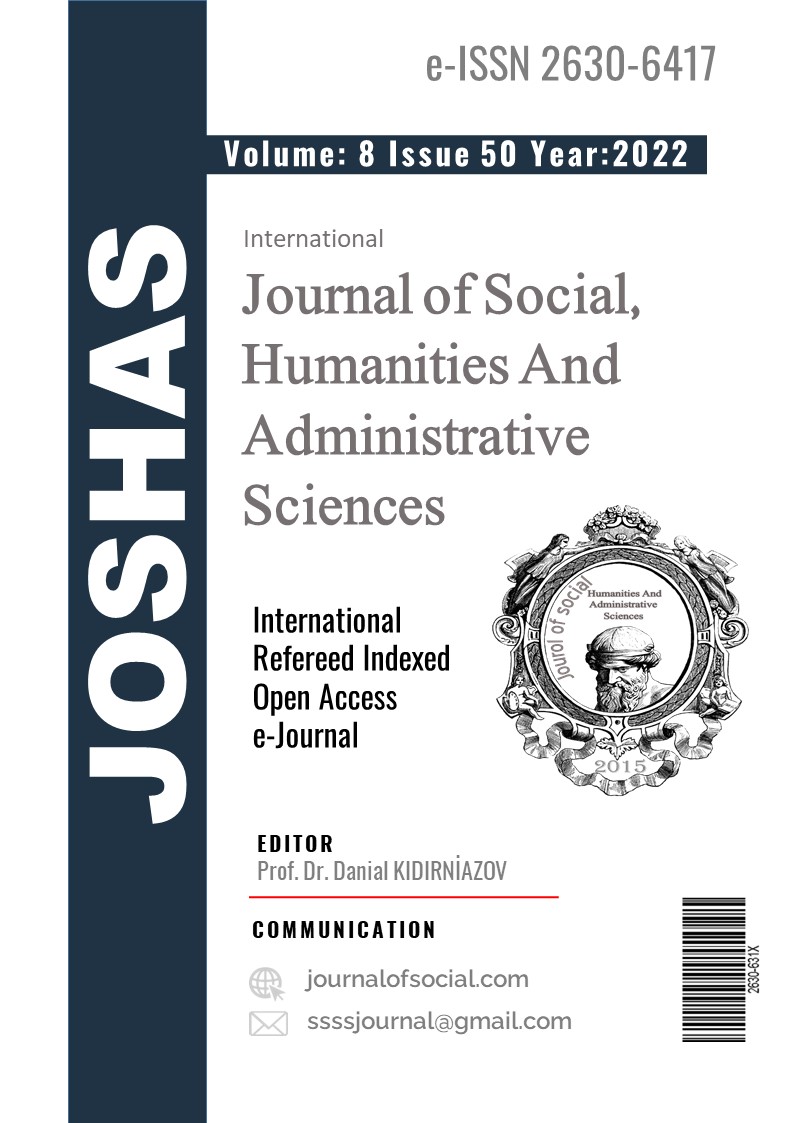9. Sınıf Kuvvet Ve Hareket Konusu İle İlgili Kavram Yanılgılarını Belirlemek İçin Üç Aşamalı Bir Testin Geliştirilmesi
Author :
Abstract
Bu çalışmanın amacı 9. sınıf Kuvvet ve Hareket konusu ile ilgili kavram yanılgılarını tespit etmek için 3 aşamalı bir testin geliştirilmesidir. 3 aşamalı kavram testi geliştirilirken literatür taraması yapıldıktan sonra Kuvvet ve Hareket ünitesi ile kavram yanılgıları belirlendi ve bu kavram yanılgılarına yönelik testin ilk aşaması olan çoktan seçmeli kavramsal sorular oluşturuldu. Oluşturulan bu sorular bu konuları görmüş olan Kilis Anadolu Lisesi 9. sınıf (78 kişi) öğrencilerine ve Kilis 7 Aralık Üniversitesi fizik bölümü mezunu 9 formasyon öğrencisine sorulmuştur. Öğrencilerden kavramsal soruya cevap vermeleri ve verdikleri cevabın nedenini yazmaları istendi. Yazılan nedenler doğrultusunda kavram testinin ikinci aşaması olan ilk soruya verilen cevabın nedeninin sorulduğu aşama oluşturuldu. Testin son aşaması olan ilk iki soruya verdiği cevaplardan emin olup olmama durumlarının sorulduğu 3. aşama eklendikten sonra testin geçerliği ve amaca hizmet edip etmediği uzman görüşleri alınarak karar verildi. Alınan geri dönütler doğrultusunda yapılan düzeltmeler sonucunda 14 sorudan oluşan üç aşamalı kavram yanılgısı testinin taslak hali oluşturulmuştur. Taslak test, güvenirlilik hesabı için Ankara’da çeşitli okullarda bulunan 15 fizik öğretmeni ve 63 onuncu sınıf öğrencisine uygulanmıştır. Sonuç olarak, test için Cronbach alfa güvenirlik katsayısı .71 olarak bulunmuştur. Elde edilen bulgular, öğrencilerin testten almış oldukları puanların kuvvet ve hareket konularını nitel olarak anlamalarının geçerli ve güvenilir bir ölçüsü olabileceğini göstermiştir.
Keywords
Abstract
The aim of this study is to develop a 3-stage test to detect misconceptions about 9th grade Force and Motion. While developing the 3-stage concept test, after a literature review, misconceptions were identified with the Force and Motion unit, and multiple-choice conceptual questions, which were the first stage of the test for these misconceptions, were created. These questions were asked to 9th grade students (78 students) of Kilis Anatolian High School and 9 formation students who graduated from the physics department of Kilis 7 Aralik University. Students were asked to answer the conceptual question and write down the reason for their answer. In the direction of the written reasons, the second stage of the concept test which the reason for the answers given to the first question was established. The third stage of the test which was asked whether they were sure about the answers to the first two questions was added. Then the decision was made based on the expert opinion that the test was valid and whether it served the purpose. As a result of the improvements made in the direction of the received feedbacks, the draft version of the three-stage misconception test consisting of 14 questions was formed. 15 physics teachers and 63 10th grade students in various schools in Ankara were subjected to this three-stage test and the reliability of the test was calculated. As a result, the Cronbach alpha reliability coefficient for the test was found to be 0,71. The findings showed that the scores that students got from the test could be a valid and reliable measure of their qualitative understanding of force and motion.
Keywords
- Akpınar, M. (2012, Temmuz Pazartesi). Bağlam Temelli Yaklaşımla Yapılan Fizik Eğitiminde Kavramsal Değişim
- Akpınar, M. (2012, Temmuz Pazartesi). Bağlam Temelli Yaklaşımla Yapılan Fizik Eğitiminde Kavramsal Değişim Metinlerinin Öğrenci Erişisine Etkisi. Doktora Tezi. Ankara, Yenimahalle, Türkiye: Gazi Üniversitesi.
- Alfaistatistik. (2017, Kasım 13). Alfaistatistik İstatistik Danışmanlık. KR-20, KR-21, Cronbach Alfa, Test-Tekrar- Test Hangi Güvenirlik Katsayısını Kullanmalıyım?: http://www.alfaistatistik.com adresinden alınmıştır
- Bademci, V. (2006). Tartışmayı Sonlandırmak: Cronbach'ın Alfa Katsayısı İki Değerli [0,1] Ölçümlenmiş Maddeler ile Kullanılabilir. Kazım Karabekir E~itim Fakültesi Dergisi, 438-446.
- Candan, A. S., & Koçer, Ö. (2013). Tarih Dersindeki Kavramların Algılanma Düzeylerine Đlişkin Bir Değerlendirme. Tarih Kültür ve Sanat Araştırmaları Dergisi, 253-273.
- Coştu, B., Ayas, A., & Ünal, S. (2007, Mart). Kavram Yanilgilari ve Olasi Nedenleri: Kaynama Kavrami. Kastamonu Eğitim Dergisi, 15(1), 123-136.
- Çelebi, Ç. D. (2013, Kasım 12). Karma Araştırma Yöntemleri. Prezi: https://prezi.com/x8j19gohtqyx/karma- arastirma-yontemi/ adresinden alınmıştır
- Çepni, S., Ayas, A., Johnson, D., & Turgut, M. F. (1997). Fizik Öğretimi. Ankara: YÖK.
- Demir, N., Kızılay, E., & Bektaş, O. (2016). Development of an Achievement Test about Solutions for 7th Graders:A Validity and Reliability Study. Necatibey Eğitim Fakültesi Elektronik Fen ve Matematik Eğitimi Dergisi, 209-237.Driver, R., & Easley, M. J. (1978). Popils and Paradigms: A review of literature related to concept development. Studies in Science Education(5), 61-84.
- Erickson, G. L. (1979). Chidren's conception of heat and temperature. Science Education, 2(63), 221-230. Eymen, U. E. (2017). SPSS 15.0 Veri Analiz Yöntemleri. Ankara: İstatistik Merkezi.
- Geban, Ö., Ertepınar, H., & Sönmez, G. (2001). Altıncı sınıf ögreneilerinin elektrik konusundaki kavramlarıanlamalannda kavramsal degişimin etkisi. Fen Bilimleri Eğitimi SempozyumuBildirileri, (s. 35-38). Maltepe, İstanbul.
- Gelbal, S. (2013). Ölçme ve Değerlendirme. Eskişehir: Anadolu Üniversitesi.
- Karasar, N. (2017). Nitel ve Nicel Sınıflandırma. N. Karasar içinde, Bilimsel Araştırma Yöntemi (s. 44-45). İstanbul: Nobel.
- Kartal, S. K., & Dirlik, E. M. (2016). Geçerlik Kavramının Tarihsel Gelişimi ve Güvenirlikte En Çok Kullanılan Yöntem: Crobach Alfa Katsayısı. Abant İzzet Baysal Üniversitesi Eğitim Fakültesi Dergisi, 1865-1879.
- Malatyalı, E., & Yılmaz, K. (2010). Yapılandırmacı Öğrenme Sürecinde Kavramlar ve Önemi: Kavramların Pedogojik Açıdan İncelenmesi. Uluslararası Sosyal Araştırmalar Dergisi, 320-332.
- Nussbaum, J., & Novak, J. D. (1976). An assesment of children's concepts of the earth using structured intervews. Science Education, 4(60), 535-550.
- Posner, G. J., Strike, K. A., Hewson, P. W., & Gertzog, W. A. (1982, Nisan). Accommotation of Scientific Conception: Toward a Theory of Conceptial Change. Science Education, 211-217.
- Schmidt, H. J. (1997). Students' Misconceptions: Looking for a Pattern. Science Education, 81(2), 123-135.
- Yılmazer, U. (2014). Eğitimde Ölçme ve Değerlendirme. Ankara: Paradigma.EKLER





